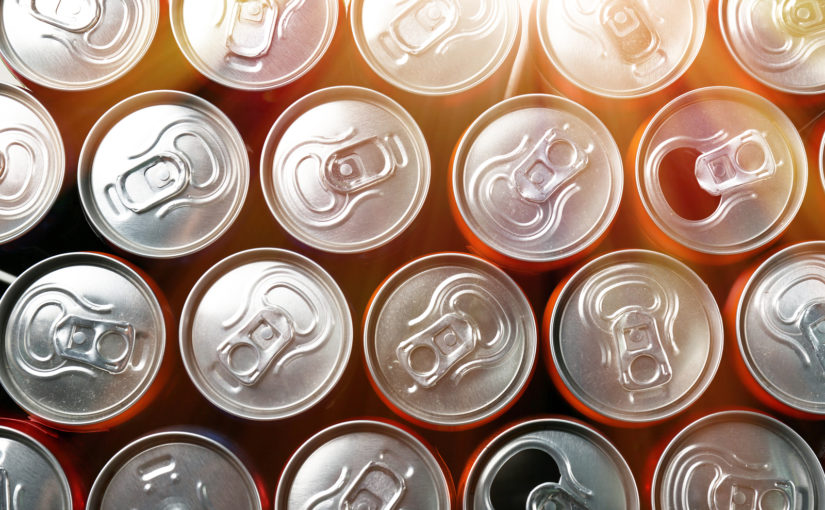An aluminium can recycling rate of 85% could be achieved by 2020 using the existing system, according to a report from aluminium packaging recycling organisation Alupro.
The deadline – which has been used as a landmark date in many environmental initiatives for the past decade or more – is now just two years away, but the organisation believes an 85% recycling rate is a realistic level for the end of this decade, rising further to hit 90% by 2030.
Recycling aluminium has numerous benefits – ranging from repeated use of finite natural resources such as the aluminium ore, to significant reductions in the amount of energy required to process recycled aluminium, compared with producing virgin metal.
As of 2017, 72% of aluminium cans were recycled – up from 70% in the previous year – helping to support an overall recycling rate of 51% for aluminium packaging materials in general.
Where is aluminium packaging recycled?
Alupro’s report found that over 90% of the UK’s aluminium packaging collected for recycling is processed within Europe, a sign of adequate recycling facilities within the UK and its continental neighbours.
But it adds that “there is more than enough capacity to recycle all the aluminium packaging sold in the UK. It not only makes good environmental sense; it makes good commercial sense too”.
In 2017 the total amount of aluminium packaging that was recycled from UK sources stood at an approximate 94,000 tonnes, with significant economic value.
While aluminium amounts to less than 1% of household waste, it is worth about a quarter of the income generated by local councils from selling recyclable materials – and in 2017 alone this meant recyclable aluminium packaging waste was worth around £75 million for local authorities.
How can we recycle more aluminium?
The report outlines several measures that could help to boost aluminium packaging recycling rates even further during the next two years and the decade that follows:
- Communications to ensure that everybody is aware of the good reasons to recycle aluminium wherever possible.
- Consistency so that aluminium products like foil and aerosol cans are included within local authority household kerbside collections.
- On-the-go infrastructure to reduce littering and increase recovery of recyclable aluminium waste.
- Separation technology so aluminium can be recycled even from products where it has been combined with other materials.
- Responsibility reforms that alter the obligations of packaging manufacturers when it comes to recovering and recycling used materials.
It adds that accurately measuring the impact of any such efforts relies on comprehensive reporting of waste and recycling data, so that a true picture can be built up of how processors and exporters are contributing to aluminium recycling in the UK.
One final source of recycled aluminium is the ash left in the bottom of waste incinerators, from which the metal can be recovered – giving the essential final boost to the overall recovery rate.
The report says: “Recycling an average 90% of the aluminium packaging sold in the UK isn’t an ambition; it is a reality, even today. As well as collecting used aluminium packaging at kerbside, in 2017 more than 80 local authorities sent their residual household waste for incineration.
“It is estimated that these local authorities will already be achieving an overall recycling rate for aluminium packaging in excess of 90%.”
